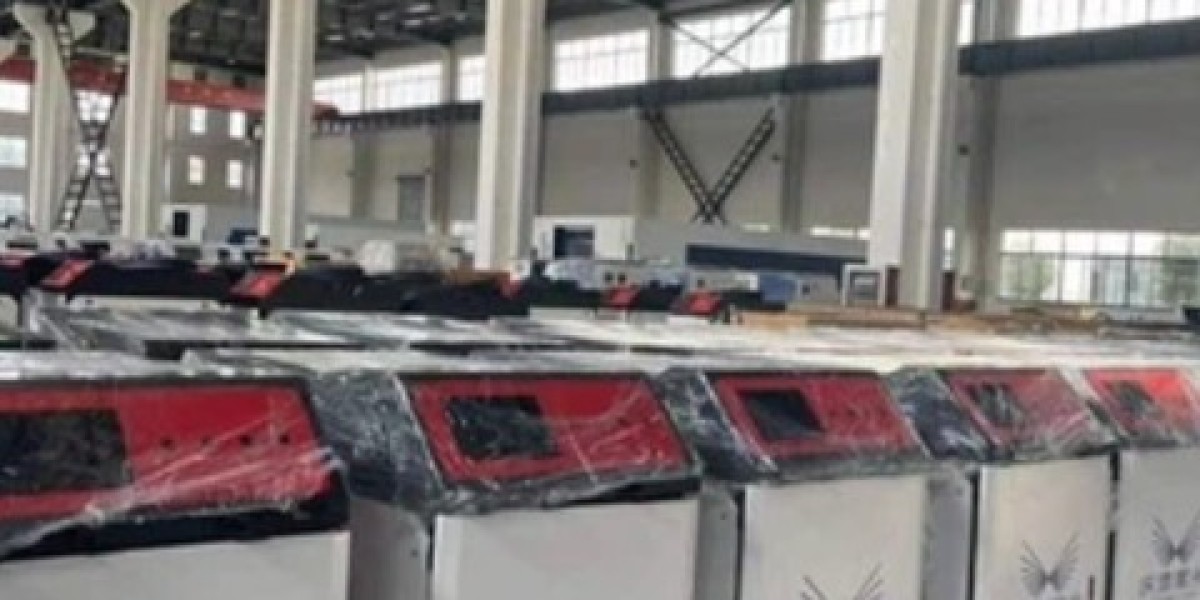These issues make traditional welding processes less effective. That’s where laser welding steps in as a game-changing solution, delivering clean, consistent, and efficient welds that meet modern production standards.
Understanding the Aluminium Laser Welder
An aluminium laser welder is a specialized machine that uses concentrated laser beams to fuse aluminium parts with exceptional accuracy. The process involves directing a high-energy laser beam to the joint area, melting and fusing the metal surfaces almost instantly. This method minimizes heat distortion, reduces material waste, and ensures stronger bonding between aluminium components.
Unlike conventional methods such as TIG or MIG welding, laser welding doesn’t rely heavily on filler materials or manual control. Instead, it offers non-contact precision welding that enhances productivity and quality. From thin sheets to thicker aluminium parts, this welding technology adapts easily to a wide range of applications.
How It Works
Laser welding works on a simple yet advanced principle. A focused laser beam acts as a heat source that melts the aluminium at the joint line. The energy is precisely controlled, ensuring the weld penetrates just deep enough to create a strong joint without affecting surrounding areas.
The laser beam can be delivered through fiber optics, making it ideal for both automated systems and handheld welding setups. During the process, the welder maintains precise control over parameters like power output, speed, and focus position. The result is a narrow, clean, and uniform weld seam that requires minimal post-processing.
Some advanced aluminium laser welders come equipped with real-time monitoring and automatic adjustment features that maintain consistency throughout long production runs. This is particularly important in industries where even a minor welding defect can compromise performance or safety.
Industrial Applications of Aluminium Laser Welding
The versatility of aluminium laser welding extends across multiple sectors. It has proven to be a reliable method for joining aluminium components where strength, appearance, and speed matter most.
1. Automotive Manufacturing
Modern vehicles incorporate large amounts of aluminium to reduce weight and improve fuel efficiency. The aluminium laser welder plays a critical role in assembling car body panels, engine parts, and battery enclosures for electric vehicles. Its precision enables manufacturers to achieve seamless joints that maintain both strength and visual appeal.
2. Aerospace and Aviation
In aerospace engineering, every gram of weight matters. Aluminium laser welding ensures lightweight assemblies with robust mechanical strength. Components such as airframes, brackets, and structural reinforcements rely on laser welding for consistent quality under demanding conditions.
3. Electronics and Electrical Components
From heat sinks to casings and connectors, laser welding provides a clean and controlled process ideal for delicate electronic assemblies. The low heat input minimizes thermal damage, which is crucial for maintaining functionality and safety in sensitive devices.
4. Construction and Fabrication
Architectural aluminium structures, doors, window frames, and facade elements benefit from laser welding’s precision. It helps fabricators achieve clean edges and strong joints that enhance the structural integrity and aesthetics of modern designs.
5. Renewable Energy Equipment
Solar panels, wind turbine housings, and energy storage systems incorporate aluminium parts that require precision welding. The aluminium laser welder ensures these components meet strict efficiency and durability standards, supporting sustainable energy goals.
Why Aluminium Needs Laser Welding
Aluminium’s high thermal conductivity means heat spreads quickly through the material during welding. In traditional methods, this causes wider heat-affected zones and potential deformation. Laser welding minimizes these issues by delivering energy only where it’s needed.
Additionally, aluminium reflects much of the heat energy used in conventional welding, but the concentrated power of a laser beam overcomes this challenge. The process ensures deep penetration and stable welds even in reflective surfaces.
For industries working with alloys such as 6061, 5052, or 7075, laser welding provides a level of control and quality assurance unmatched by manual welding. It allows manufacturers to meet strict specifications while reducing rework and material loss.
Integration into Automated Systems
One of the most powerful aspects of modern aluminium laser welders is their ability to integrate with automation. Robotic arms, CNC systems, and automated production lines can seamlessly incorporate laser welding modules.
This integration enhances precision, repeatability, and throughput. Manufacturers can program welding paths, speeds, and depths, allowing the system to perform complex tasks with minimal human intervention. In high-volume production environments, this results in consistent weld quality and optimized productivity.
Handheld laser welders have also emerged as a flexible solution for on-site or custom fabrication needs. They provide mobility and control without compromising precision, making them ideal for maintenance and small-batch production.
Quality and Efficiency in Production
Consistency is a defining feature of an aluminium laser welder. Since the process is computer-controlled, the risk of operator error is minimal. Each weld is uniform in penetration and appearance, ensuring that the end product meets both functional and aesthetic standards.
The reduced need for post-weld finishing such as grinding or polishing shortens production cycles. Moreover, since laser welding is a non-contact process, tool wear is virtually eliminated, which lowers maintenance requirements and operational costs.
Energy efficiency is another factor that makes laser welding appealing. The precise application of energy means less power waste, contributing to a more sustainable manufacturing process.
Material Compatibility and Flexibility
Aluminium laser welders are designed to handle different grades and thicknesses of aluminium. Whether it’s pure aluminium or alloyed variations, the machine can adjust to different compositions through programmable settings.
This flexibility makes it ideal for manufacturers dealing with mixed materials or hybrid assemblies. It’s possible to join aluminium with other metals like stainless steel or copper using specific parameters and filler materials, further expanding its industrial scope.
The Future of Aluminium Welding
As technology advances, the future of aluminium welding lies firmly in the hands of laser systems. With innovations such as AI-assisted control, real-time feedback monitoring, and improved beam quality, aluminium laser welders are becoming more intelligent and efficient.
Manufacturers are also shifting towards portable and modular laser systems that can be adapted to various production needs. This evolution supports both small workshops and large-scale industrial plants aiming for higher productivity with lower operational costs.
Sustainability also plays a key role. The precision and energy efficiency of laser welding align perfectly with global efforts to reduce waste and carbon emissions in manufacturing.
Final Thoughts
The aluminium laser welder represents a major leap forward in metal joining technology. Its ability to deliver precise, strong, and clean welds on one of the most challenging materials has reshaped industries worldwide. From automotive to aerospace, it continues to drive innovation and efficiency, meeting modern demands for lightweight, durable, and high-performance assemblies.
As manufacturing evolves, investing in this advanced welding solution is not just a technical upgrade—it’s a strategic move toward smarter, faster, and more sustainable production. The future of aluminium fabrication belongs to laser technology, where precision and performance come together to define the new industrial standard.








